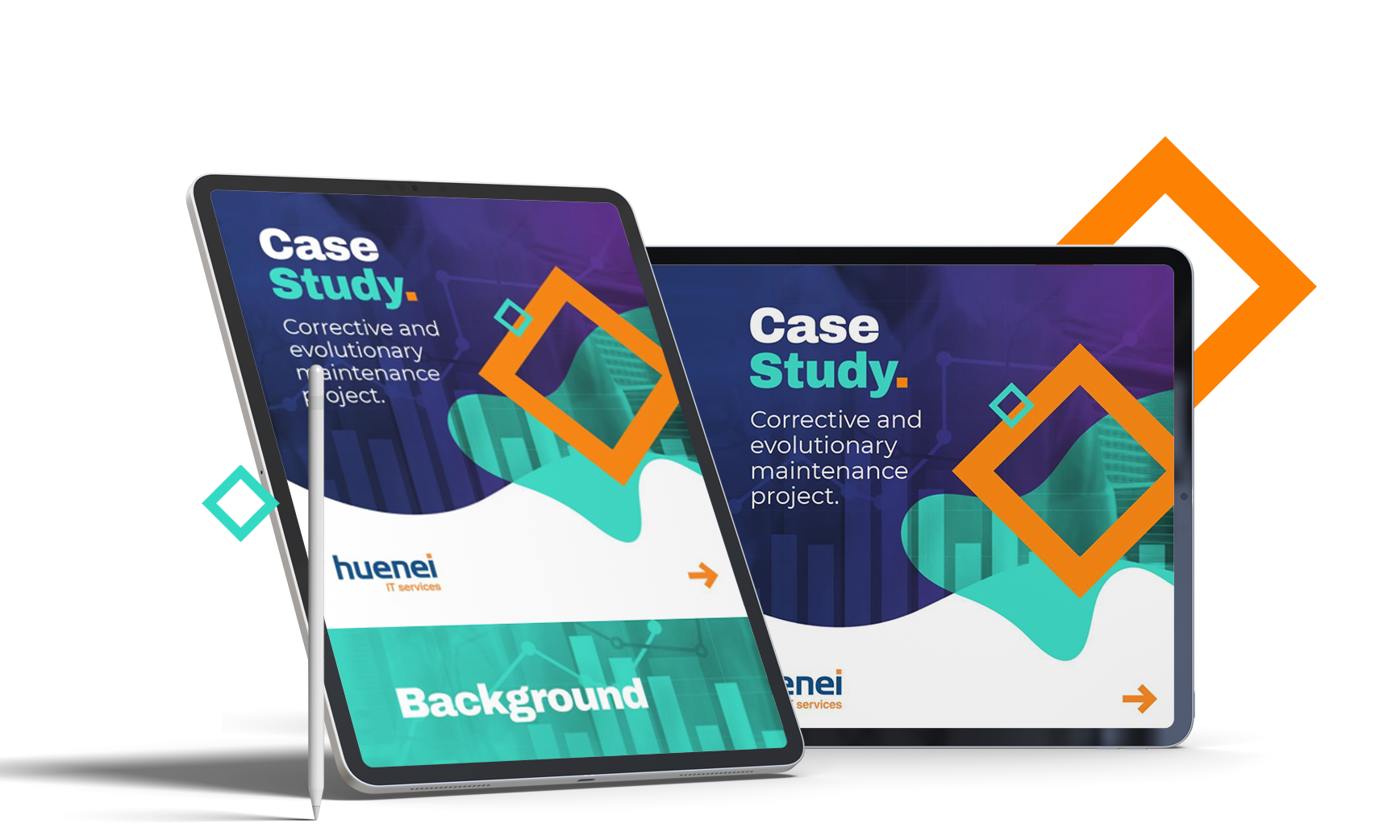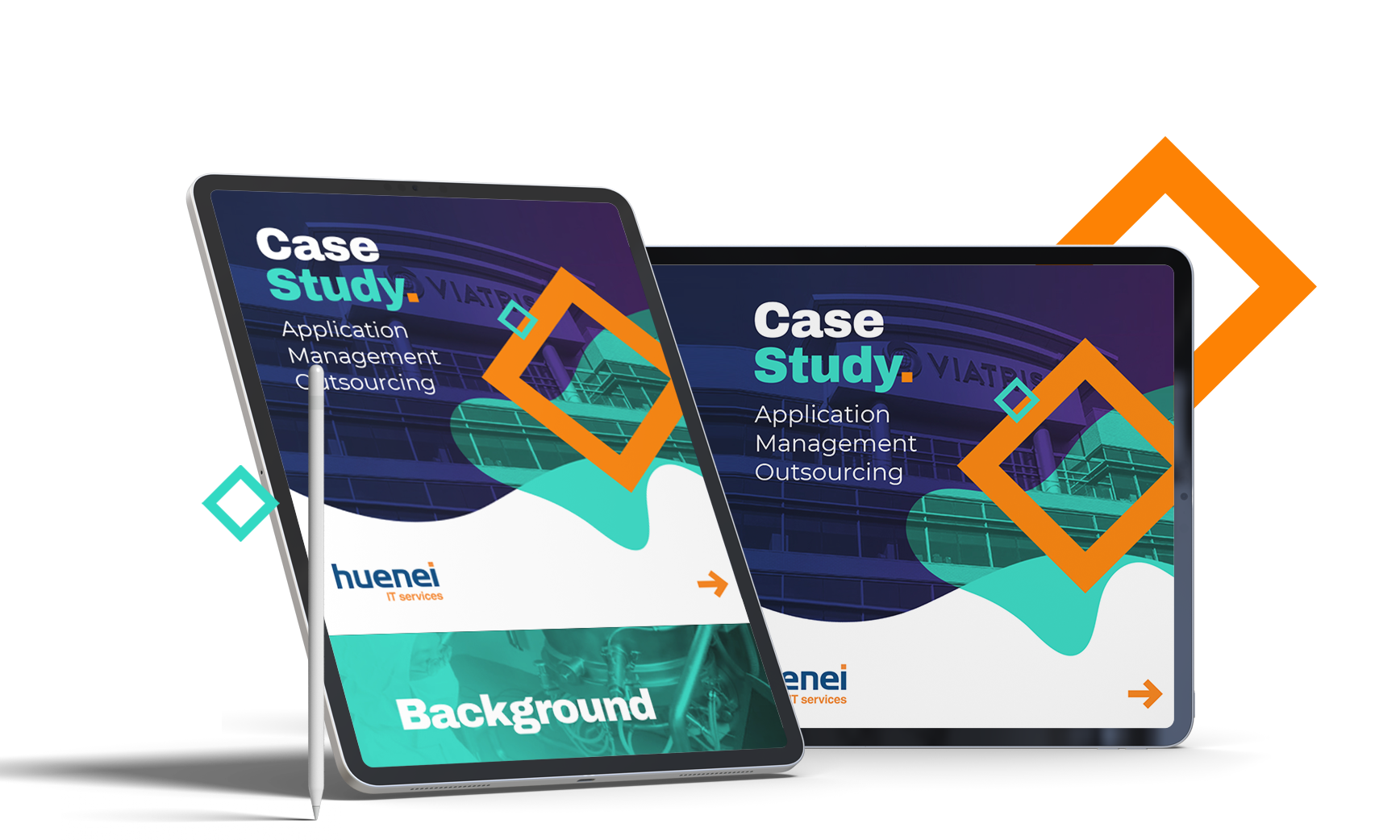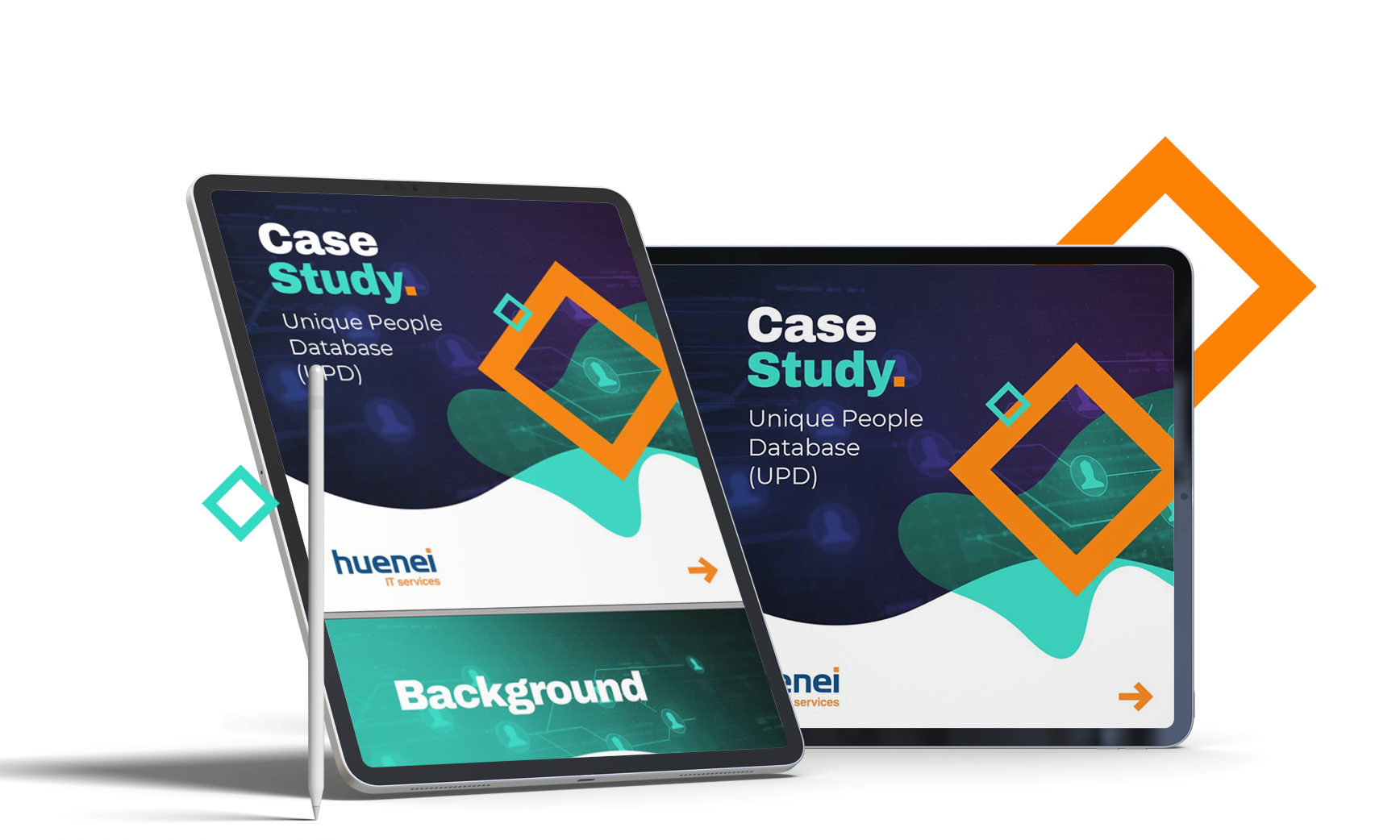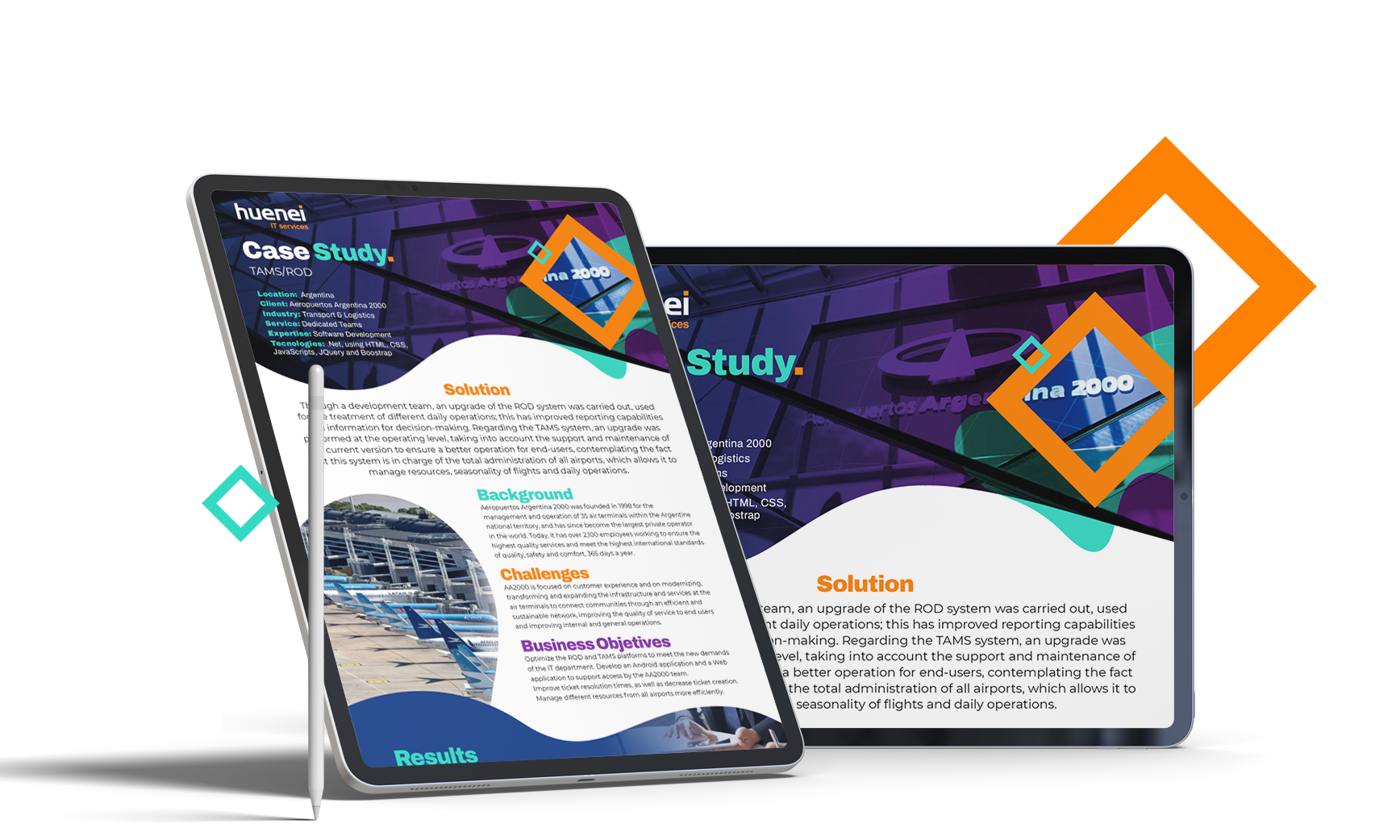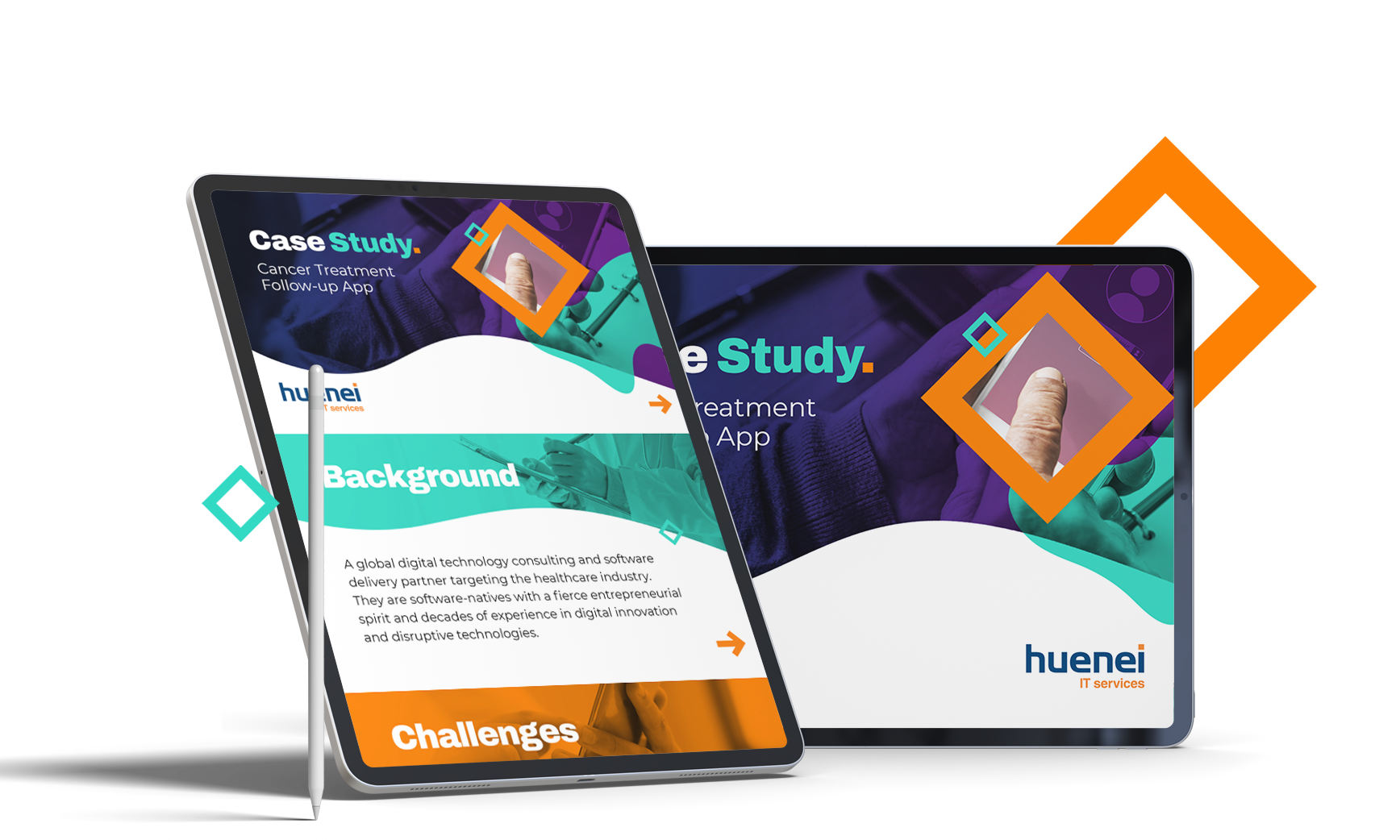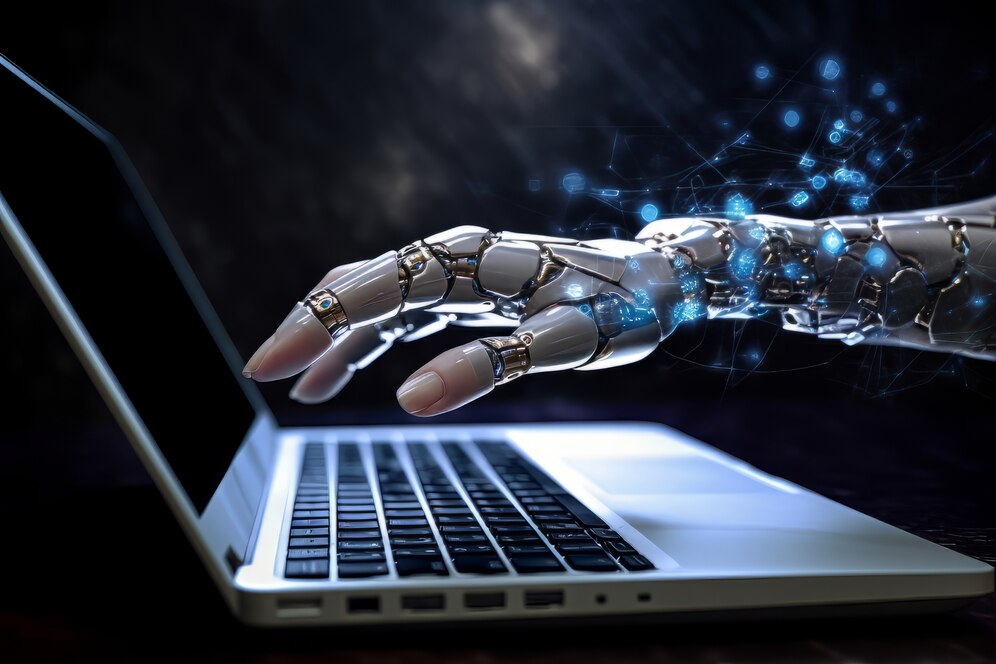
by Huenei IT Services | Apr 8, 2024 | Artificial Intelligence, Software testing
The software industry is a relentless sprint.
Development teams face ever-increasing pressure to deliver high-quality solutions at breakneck speed. Traditional testing methods, however, can be slow and cumbersome, acting as a bottleneck in your agile workflow.
At Huenei, we understand this challenge. That’s why we’ve harnessed the power of Artificial Intelligence (AI) to revolutionize our software testing processes. We can help you do the same.

“AI-powered testing tools have been a game-changer for our teams,” says Alejandra Ochoa, Service Delivery Manager at Huenei. “By automating and optimizing various aspects of the testing lifecycle, we’ve been able to significantly reduce the time and effort required to ensure the quality of our software solutions.”
Accelerating Test Automation with AI
One of the key benefits we’ve experienced is the ability to create airtight automated tests up to five times faster than traditional methods. We leverage advanced algorithms and natural language processing (NLP) capabilities, allowing our developers and testers to write automated tests in plain English. This NLP-based scripting approach simplifies the test authoring process and promotes collaboration among team members with varying technical backgrounds.
“The NLP-based scripting feature has been a game-changer for our agile teams,” Ochoa explains. “Our testers can now focus on testing scenarios and leave the technical implementation details to the AI-powered tools, resulting in more efficient and effective test coverage.”
With this remarkable effort decrease in automatic test case generation, we’re empowered to seamlessly integrate automated testing right from Sprint #1 for all new application developments. Plus, as the Sprints unfold, we can effortlessly expand test coverage, ensuring superior quality and coverage every step of the way. And even more benefits, once the software application has been ended, we have full automated testing coverage!
Streamlining Test Execution and Error Detection
But the benefits don’t stop there. AI-powered testing tools have also optimized test execution, reducing build times from hours to minutes. This efficiency translates into faster feedback loops, allowing our development teams to identify and address issues more promptly, ultimately speeding up the delivery of high-quality software solutions to our clients.
Moreover, these tools excel at identifying and diagnosing functional and visual errors that may have gone unnoticed by human testers. By analyzing vast amounts of data and recognizing patterns, AI-powered testing solutions can catch even the most subtle defects, ensuring a more robust and reliable software product for our clients.
Embracing AI in Agile Testing
At Huenei, we’ve fully embraced the integration of AI in our software testing processes, recognizing its potential to enhance our agile development methodologies. From data-driven testing to cross-platform compatibility testing, AI-powered tools provide comprehensive capabilities that enable our teams to work more efficiently and deliver superior results.
“One of the key advantages of AI in our agile testing processes is the ability to continuously learn and adapt,” Ochoa notes. “As AI-powered tools process more data and encounter new scenarios, they refine their algorithms and improve their testing strategies, resulting in more effective and efficient testing over time.”
Empowering Teams with Intelligent Solutions
At the core of our approach is the belief that AI should empower our teams, not replace them. While AI-powered testing tools automate and optimize many aspects of the testing process, human expertise and oversight remain crucial. We strike a balance between leveraging AI capabilities and ensuring that our developers and testers are actively involved, providing valuable insights and making critical decisions.
“We prioritize responsible and trustworthy AI practices,” Ochoa emphasizes. “Our ethical guidelines and principles ensure that our AI-powered testing tools are developed and deployed with fairness, accountability, and transparency in mind.”
By harnessing the power of AI in our software testing processes, we unlock new levels of efficiency, quality, and agility.

by Huenei IT Services | Apr 8, 2024 | Artificial Intelligence
As technology continues its relentless march forward, we are witnessing the convergence of several truly disruptive innovations – WEB3, the Internet of Things (IoT), Artificial Intelligence (AI), and Blockchain. This powerful intersection is shattering boundaries and unlocking unprecedented opportunities for businesses to thrive in the digital age.

Redefining Digital Ownership with WEB3
At the core of this convergence lies WEB3, the next evolutionary leap for the World Wide Web. WEB3 represents a paradigm shift, decentralizing the web and putting control back into the hands of users through blockchain-based ownership of digital assets and data. This democratization disrupts traditional power dynamics, fostering greater transparency, autonomy, and innovation.
In this new realm, businesses can leverage non-fungible tokens (NFTs) and decentralized applications (dApps) to create unique digital assets and experiences for their customers. From tokenized loyalty programs to immersive virtual worlds, the potential for novel engagement models is staggering. Crucially, WEB3 safeguards user privacy and data sovereignty, fostering trust – the bedrock of lasting customer relationships.
Real-Time Intelligence Fueled by IoT
Complementing WEB3 is the Internet of Things, an interconnected ecosystem of physical devices embedded with sensors and software, collecting and exchanging real-time data. This continuous stream of IoT intelligence provides businesses with unprecedented visibility into their operations, assets, and customer behaviors.
By harnessing IoT data, companies can optimize processes, preempt maintenance issues, and deliver hyper-personalized products and services. The possibilities are vast – from predictive maintenance in manufacturing to precision agriculture and smart city initiatives. And when combined with AI, the insights extracted from this data become even more powerful.
AI: The Intelligence Amplifier
Artificial Intelligence acts as a force multiplier, turbocharging decision-making, automation, and personalization across virtually every industry vertical. As the volume and complexity of data grow, AI’s ability to identify patterns, make predictions, and generate insights becomes indispensable.
From supply chain optimization and dynamic pricing models to chatbots and recommendation engines, AI is already augmenting human capabilities and driving operational efficiencies. As the technology continues to evolve, we can expect to see increasingly sophisticated applications in areas like autonomous systems, computer vision, and generative AI – opening new frontiers for innovation.
Blockchain: The Trust Protocol
Underpinning this convergence is Blockchain, the distributed ledger technology that guarantees secure, transparent, and tamper-proof record-keeping. By decentralizing trust and removing intermediaries, Blockchain streamlines processes, reduces costs, and mitigates risks associated with fraud, cybercrime, and counterfeiting.
In supply chain management, for instance, Blockchain enables comprehensive traceability – from raw materials to finished goods, empowering conscious consumers with complete transparency. In finance, it’s revolutionizing cross-border payments, lending, and trading through decentralized finance (DeFi) platforms. In healthcare, it’s fortifying the integrity of electronic medical records and powering secure data-sharing for collaborative research.
Success Stories from the Convergence Frontier
While still in its nascent stages, the convergence of these technologies is already yielding compelling success stories across diverse sectors:
- In fashion, companies like MVFW are leveraging NFTs and virtual runways to engage younger audiences and monetize digital fashion experiences.
- Automotive giants like BMW are exploring Blockchain to create tamper-proof digital histories for vehicles, enhancing trust and transparency.
- DeFi platforms like Aave are using AI to automate loan origination and risk assessment, driving financial inclusion.
- Agriculture leaders like Haylettee are deploying IoT sensors and Blockchain to optimize crop yields while enabling full supply chain transparency.
The examples are endless, spanning retail, manufacturing, energy, transportation, and beyond. However, these are just the opening salvos – the true potential of this convergence has barely been tapped.
Embracing the Convergence
As these powerful technologies continue intertwining, businesses face an inflection point: they can either embrace the convergence or risk obsolescence. By harnessing WEB3, IoT, AI, and Blockchain in unison, forward-thinking organizations can unlock new revenue streams, forge deeper customer relationships, drive sustainable practices, and future-proof their operations.
The convergence isn’t just a technological revolution – it’s a fundamental reshaping of how businesses create and deliver value. And those who take the leap stand to reap immense competitive advantages in this boundary-less frontier. The future belongs to the bold, the innovative, and those willing to ride the convergence wave into uncharted waters of opportunity.

by Huenei IT Services | Apr 8, 2024 | Artificial Intelligence, Software development
The convergence of Artificial Intelligence (AI) and the Internet of Things (IoT) is ushering in a paradigm shift, where intelligent applications and solutions are poised to transform virtually every industry.
This powerful synergy is unlocking new frontiers of real-time data analysis, intelligent automation, and data-driven decision-making, promising to redefine how we interact with the world around us.

Real-Time Data Analysis with AI and IoT
At the core of this revolution lies the ability to harness the vast troves of data generated by IoT devices and extract actionable insights using AI algorithms. IoT sensors and devices, deployed across diverse environments, continuously collect and transmit data on various parameters, ranging from environmental conditions to equipment performance and human behavior.
However, this deluge of data is only valuable if it can be effectively analyzed and translated into meaningful information. This is where AI shines, with its ability to process and identify patterns within vast datasets at unprecedented speeds. By integrating AI with IoT systems, organizations can gain real-time visibility into their operations, enabling proactive decision-making and responsive action.
For instance, predictive maintenance is a prime example of this synergy in action. AI algorithms can analyze sensor data from industrial machinery, detecting anomalies and predicting potential failures before they occur. This not only minimizes downtime and reduces maintenance costs but also enhances safety and extends the lifespan of critical equipment.
Intelligent Task Automation and Decision-Making
Beyond real-time data analysis, the integration of AI and IoT is driving the development of intelligent applications that can automate tasks and make informed decisions based on data-driven insights. These applications leverage machine learning algorithms to continuously learn and adapt, enabling them to optimize processes and operations dynamically.
In the realm of smart cities, AI-powered IoT systems can monitor traffic patterns, adjust signal timings, and reroute vehicles to alleviate congestion, reducing commute times and minimizing environmental impact. Similarly, in precision agriculture, AI algorithms can analyze soil moisture, weather patterns, and crop health data from IoT sensors to optimize irrigation schedules, fertilizer application, and harvesting times, maximizing yields while minimizing resource consumption.
Intelligent applications powered by AI and IoT are not limited to physical environments; they are also transforming digital domains. Chatbots and virtual assistants, for instance, can leverage natural language processing and machine learning to provide personalized, context-aware support, enhancing customer experiences and streamlining operations.
Cross-Industry Applications and Impact
The applications of AI and IoT integration are vast and far-reaching, spanning industries as diverse as healthcare, energy, transportation, and manufacturing.
In healthcare, AI-powered IoT devices can monitor patients’ vital signs, medication adherence, and activity levels, enabling remote monitoring and early intervention. These systems can also assist in disease diagnosis and treatment planning by analyzing medical imagery and patient data.
The energy sector is leveraging AI and IoT to optimize energy production, distribution, and consumption. Smart grids equipped with IoT sensors and AI algorithms can balance energy loads, detect and respond to outages, and integrate renewable energy sources more efficiently.
In transportation, AI and IoT are driving the development of autonomous vehicles, intelligent traffic management systems, and predictive maintenance for fleets. These technologies promise to enhance safety, reduce emissions, and optimize logistics operations.
Ethical and Security Considerations
While the potential of AI and IoT integration is undeniable, it also raises important ethical and security concerns that must be addressed. Privacy and data protection are paramount, as IoT devices collect vast amounts of potentially sensitive information, which could be exploited if not properly secured.
Furthermore, the decision-making processes of AI systems must be transparent and explainable, particularly in high-stakes scenarios such as healthcare or autonomous vehicles, where biased or opaque decisions could have severe consequences.
Ensuring the responsible development and deployment of AI and IoT technologies requires a multifaceted approach, including robust cybersecurity measures, adherence to ethical principles and guidelines, and ongoing collaboration between technology providers, policymakers, and end-users.
Embracing the Future of Intelligent Solutions
The integration of AI and IoT is no longer a futuristic vision; it is a reality that is rapidly transforming industries and shaping the world around us. Technology leaders who embrace this convergence and leverage its potential stand to gain a significant competitive advantage.
By harnessing the power of real-time data analysis, intelligent automation, and data-driven decision-making, organizations can optimize operations, enhance customer experiences, and drive innovation in ways previously unimaginable.
However, this journey requires a holistic approach, encompassing not only the adoption of cutting-edge technologies but also a commitment to responsible development, ethical considerations, and continuous learning and adaptation.
As we navigate this exciting new era, one thing is certain: the synergy between AI and IoT will continue to push the boundaries of what is possible, enabling us to create intelligent solutions that meet the evolving needs of businesses and society at large.
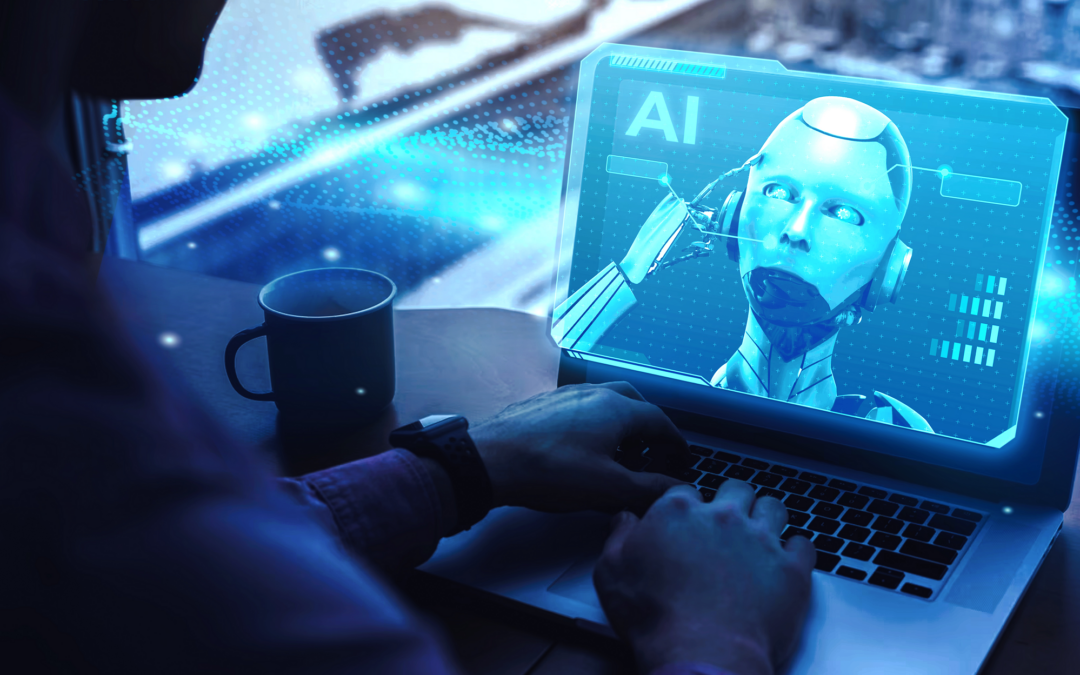
by Huenei IT Services | Mar 4, 2024 | Artificial Intelligence
The rise of conversational chatbots and virtual customer assistants provides a tantalizing promise for the future of automated customer support.
Yet the vast majority of chatbots and AI-powered conversational tools still struggle to move beyond their narrow scripted domains. But what if AI could go deeper? While chatbots have been instrumental in automating basic customer interactions, Generative AI expands the horizon, offering a plethora of applications beyond scripted responses.
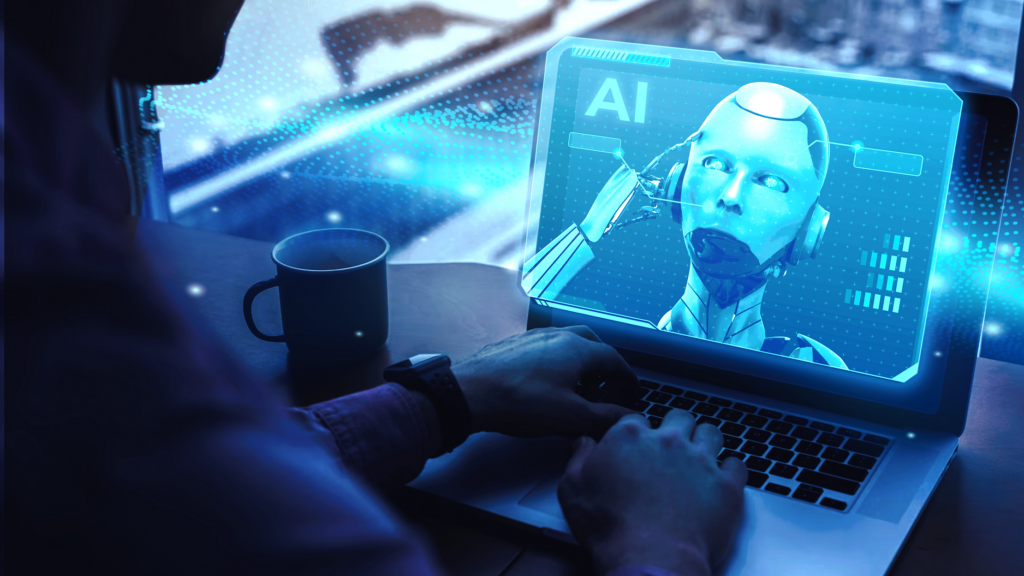
Real-world Applications
Let’s take a closer look at how GenAI is reshaping customer support across various industries:
- Automated Ticket Routing: Analyze support ticket details and descriptions to instantly determine the correct assignment routing – whether that’s to a specialist team, specific agent, or automated workflow. Accurately routing higher volumes of tickets serves to dramatically improve overall response times.
- Knowledge Enhancement: Generate contextual knowledge articles, product support pages, and FAQs tailored to precise customer scenarios and pain points. Continually publishing hyper-focused content then creates a powerful information foundation for both customers and agents.
- Response Acceleration: Generate instant personalized draft responses for customer inquiries and issues by ingesting and analyzing historical interactions and resolution data. Agents then simply review and finalize responses while enjoying huge productivity gains.
- Automation Expansion: Streamline low-complexity tasks such as order status checks, refund requests, and appointment scheduling entirely through automated generative conversations. This frees agents to focus on the most complex – and rewarding – customer interactions.
Generative AI Revolutionizing Support
Gen AI and associated techniques sit at the heart of the next era of customer support innovation. As Jorge Attaguile, Founder and COO of Huenei, explains:
“We are working on various initiatives with Generative AI. Our proposal would help in the customer service process, streamlining response times through task automation. Developments vary according to each client’s needs.”
Imagine a scenario where farmers require immediate assistance regarding crop management or supply chain queries. Our ongoing initiative in the agricultural sector leverages Generative AI to provide swift and personalized responses to customer inquiries. By analyzing historical data and tailoring responses to individual needs, Generative AI enhances customer satisfaction while freeing up valuable time for human agents to focus on complex tasks.
In the insurance sector, time is of the essence, especially when addressing policy inquiries or claims processing. Through task automation, Generative AI streamlines low-complexity tasks such as appointment scheduling and FAQ responses. This not only accelerates response times but also enhances operational efficiency, allowing agents to allocate resources towards high-value activities.
In the pharmaceutical sector, where compliance and accuracy are paramount, Generative AI serves as a valuable resource for human agents. By providing real-time suggestions and resources, Generative AI assists agents in resolving complex customer issues efficiently. Whether it’s navigating regulatory policies or recommending product information, Generative AI empowers agents to deliver superior customer service with confidence.
The impacts of implementing AI across the customer support function are multifaceted and compelling. By ingesting historical customer interactions and resolution data, AI can draft personalized responses in real time, accelerating the speed of resolution by 33% on average. Simultaneously, generative models can process up to 5 times the volume of support tickets compared to human-only teams, ensuring more customers get timely responses. This combination of faster response velocities and higher volumes directly correlates with sky-high 89% customer satisfaction scores from early adopters. Teams leveraging AI-generated draft responses also see a 45% increase in first-contact resolution rates – reducing costly back-and-forth exchanges. With more customer issues resolved instantly via personalized self-service conversations, call volumes decrease by up to 18% – further optimizing support costs. The numbers speak for themselves – generative AI delivers better, faster, and more cost-efficient customer experiences.
As Attaguile summarizes, “Generative AI can significantly improve the customer service process by providing quick, personalized, and empathetic responses, as well as automating repetitive tasks.”
Recommendations for Action
To actively explore the transformative potential in customer support, consider the following recommendations:
Evaluate Your Current Workflow: Conduct a thorough assessment of your existing customer support workflow to identify areas where Generative AI can drive tangible improvements.
Pilot Projects and Proof of Concepts: Initiate pilot projects or proof of concepts to gauge the feasibility and effectiveness of Generative AI solutions within your organization.
Collaborate with AI Experts: Partner with experienced AI vendors or consultants who specialize in Generative AI to leverage their expertise and ensure successful implementation.
Continuous Monitoring and Optimization: Continuously monitor and optimize Generative AI solutions to align with evolving customer needs and business objectives, ensuring sustained success in customer support initiatives.
In conclusion, Generative AI represents a paradigm shift in customer support, offering unparalleled opportunities to enhance efficiency, improve customer satisfaction, and drive tangible ROI. By transcending the limitations of traditional chatbots and embracing innovative applications, organizations can elevate their customer service experiences to new heights. Embrace the power of Generative AI today and revolutionize your approach to customer support in the digital age.

by Huenei IT Services | Feb 1, 2024 | Artificial Intelligence
A recent McKinsey study revealed groundbreaking productivity potential from pairing developers with generative AI tools. Test developers saw coding tasks completed up to twice as fast across refactoring, new feature building, and code documentation.

The gains come from generative AI supercharging developers in 4 key areas:
- Expediting manual and repetitive coding work through autocompletion and documentation
- Jump-starting new code drafting with on-demand suggestions
- Accelerating updates to existing code by easing edits
- Enabling developers to tackle unfamiliar challenges with framework guides and snippets
Leading AI coding assistants like GitHub Copilot, TabNine, and Codex allow developers to generate code snippets and entire functions through conversational prompts, drastically accelerating rote programming work. Developers retain oversight to evaluate quality and customize outputs. While focused on Python currently, experts predict advances across languages and platforms. Though optimal use cases differ. Java and C# projects have seen 10-30% shorter timelines leveraging automation for routine changes. Accelerated coding paves the way for faster release cycles, reduces costs, and frees up resources to focus on innovation. But responsible implementation is key amid rising adoption. Organizations must mitigate risks around data privacy, security vulnerabilities, and reputational impacts through governance policies and controls. Upskilling developers on generative AI best practices also improves experience, and retention while maximizing productivity gains. The future is bright for symbiotic human and AI collaboration in software engineering. With disciplined adoption, generative AI unlocks speed, cost savings, and creativity for transformative gains.
Testing First-Hand
So far, we have analyzed how the IT industry is leveraging AI to its advantage. But can we assure that everything described above is true? At Huenei, we incorporated the use of AI tools very early on. Given the promising landscape they offer and the technological revolution they entail, we could not refrain ourselves and had to give it a try. The incorporation of AI into our processes has helped streamline our and our client’s productivity. Through the use of Copilot, the autocomplete tool created by GitHub in partnership with OpenAI, we have managed to make code-writing tasks more efficient. Based on previously generated code, Copilot can autocomplete code lines or blocks. The decision to incorporate it was based on the good metrics achieved, with 40% of its Python suggestions being accepted by developers. It is important to keep in mind that developer intervention will always be necessary to avoid risks due to errors. AI has also assisted us in the process of executing unit tests, saving time and resources. Machine learning algorithms can analyze code and automatically generate test cases quickly, identifying possible scenarios and generating relevant data, reducing manual workload and accelerating the process. We have achieved optimization of unit testing by identifying areas of code prone to errors, allowing us to focus our efforts on critical flows. Similarly, code analysis provides us with recommendations on areas to expand testing coverage. By gathering and preparing test data, we have implemented a model that aligns with existing processes. The constant training and monitoring help guarantee risk mitigation. The results have been excellent. Leveraging intelligence represented an exciting opportunity to enhance the efficiency and quality of software development through automation, increasing the reliability of outcomes and reducing costs of the end product.
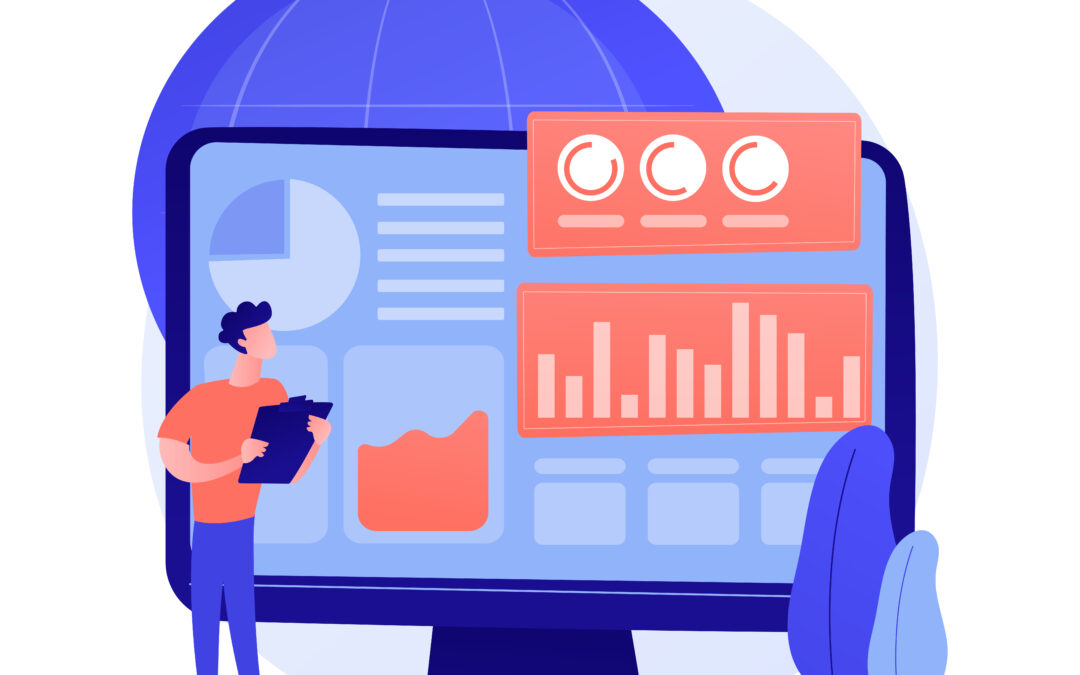
by Huenei IT Services | May 9, 2023 | Artificial Intelligence
Predictive analytics powered by artificial intelligence have immense potential to revolutionize healthcare and other industries.
By analyzing vast amounts of patient data, AI algorithms can identify individuals at risk for certain diseases and predict which treatments will be most effective for each patient. In this article, we explore how AI-enabled predictive analytics tools can help healthcare organizations achieve key objectives.
Detecting Diseases Earlier
One major healthcare goal is detecting diseases at the earliest stages when they are most treatable. AI predictive analytics support this mission by pinpointing patients likely to develop illnesses based on risk factors in their data. Doctors can then take preventative action with lifestyle changes or early interventions before diseases progress, improving outcomes.
Improving Patient Outcomes
Healthcare aims to enhance patient outcomes. AI predictive analytics support this by forecasting how patients will likely respond to different treatments. Doctors can then customize treatment plans to each patient’s predicted needs, boosting the chances of successful therapies.
Reducing Costs
Lowering healthcare expenses is a constant pursuit. AI predictive analytics curb costs by reducing ineffective therapies. Algorithms analyze patient data to determine optimal treatments, avoiding expensive trial-and-error approaches.
Enabling Personalized Medicine
Precision medicine is rising, with treatments tailored to individuals. AI predictive analytics are key, assessing genetics, lifestyles, and health histories to create personalized plans. This leads to more targeted, effective care.
Boosting Population Health
AI predictive analytics also identify health trends across populations by processing large datasets. Providers can then develop focused interventions to boost community-wide outcomes.
At Huenei, we specialize in ethical, privacy-focused AI development including predictive analytics. Our solutions enable organizations to leverage AI while protecting patient data through strong security policies. Contact us today to explore how our AI expertise can help your healthcare organization pursue vital goals.










